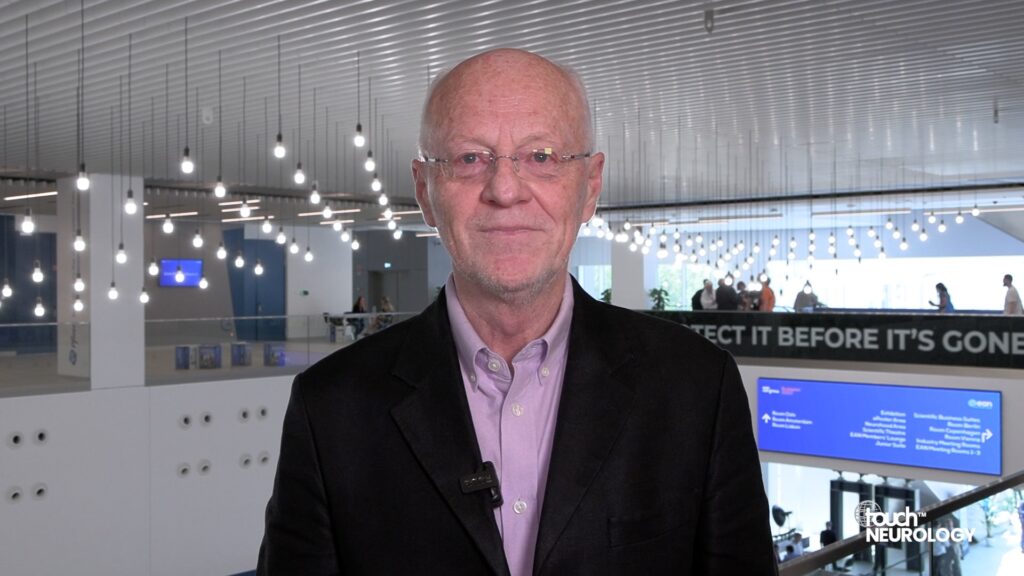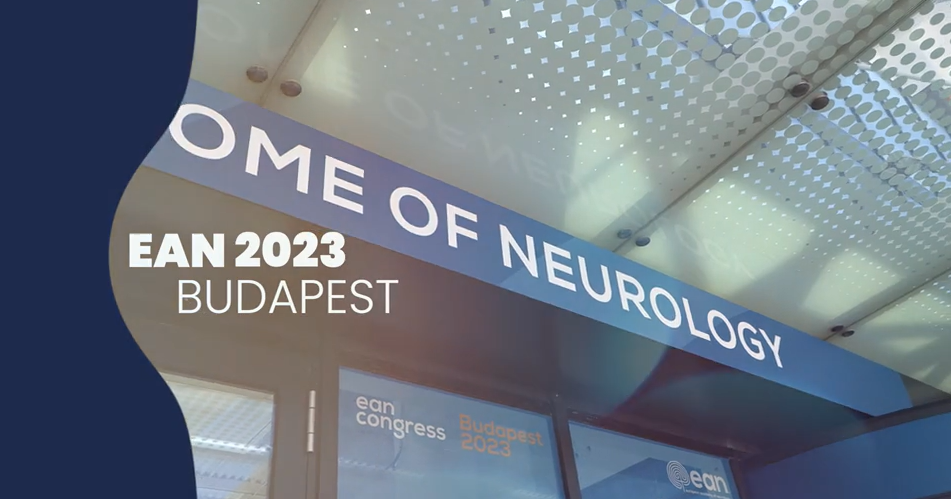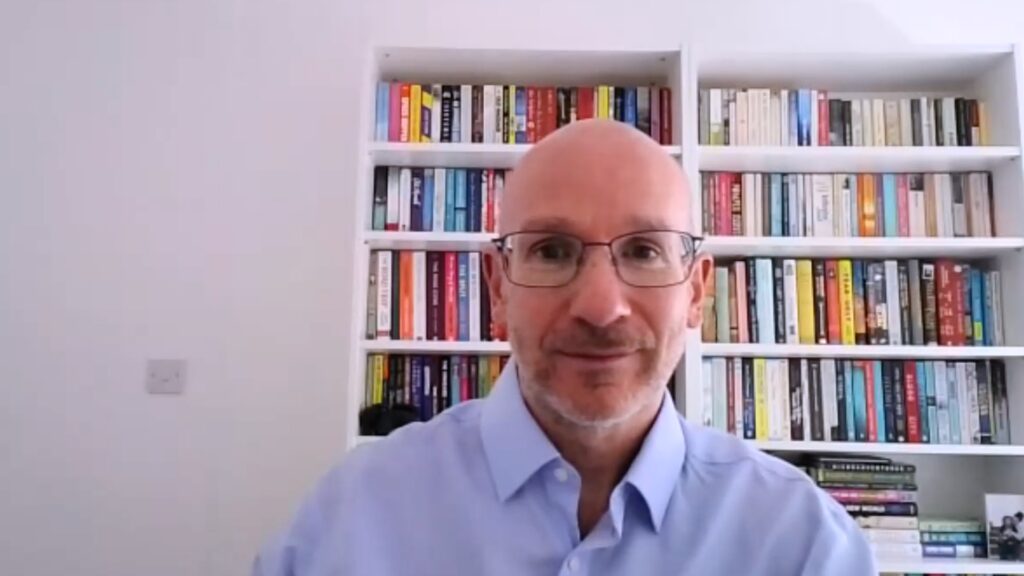touchNEUROLOGY coverage of data presented at EAN 2024:
To review key developments in headache disorders presented at EAN 2024, we spoke with Prof. Peter Goadsby from King’s College Hospital, London, UK.
Prof. Goadsby provides valuable insights into the REFORM trial (NCT04674020), which employed a novel quantitative, multimodal MRI technique to investigate cortical inflammation in adults with migraines. This study compared these patients to age- and gender-matched healthy controls to better understand the underlying biology of migraines. We also discuss cluster headaches, particularly focusing on a study examining premonitory symptoms in individuals with the disorder and highlighting observable phenotypic characteristics. Furthermore, we explore data from the European Migraine & Headache Alliance, which examined the stigma surrounding migraines and produced interesting and actionable results.
Next, we look to the future, focusing on the latest data around the many new medications for preventing and treating migraine attacks. We discuss what the coming years may hold and then shift our focus to areas of headache management that still need attention.
Questions
- What were your highlights from EAN 2024 around migraine and headache disorders? (0:14)
- Considering the advances reported at EAN 2024, what developments are you looking forward to over the coming year in the field of headache? (4:40)
- What are the key unmet needs in headache management, and which upcoming research developments excite you the most? (5:48)
Associated abstracts:
- Christensen R et. Cortical inflammation in migraine measured with quantitative magnetic resonance imaging: A REFORM study. EAN 2024. Abstract number: OPR-015
- Gonzalez-Martinez A et al. Evaluation of premonitory symptoms among patients with cluster headache. EAN 2024. Abstract number: EPO-123
- Goadsby P et al. Assessing Migraine Stigma in Europe: Insights and Implications for Support. EAN 2024. Abstract number: EPR-072
Disclosures: Peter Goadsby discloses (over the last 36 months): Grant Support from Kallyope; Personal Fees from Aeon Biopharma, Abbvie, Aurene, CoolTech LLC, Dr Reddy’s, Eli-Lilly and Company, Linpharma, Lundbeck, Pfizer, PureTech Health LLC, Satsuma, ShiraTronics, Teva Pharmaceuticals, Tremeau, and Vial, and personal fees for advice through Gerson Lehrman Group, Guidepoint, SAI Med Partners, Vector Metric; Educational Materials fees from CME Outfitters and WebMD; and publishing royalties/fees from Massachusetts Medical Society, Oxford University Press, UptoDate and Wolters Kluwer
This content has been developed independently by Touch Medical Media for touchNEUROLOGY. It is not affiliated with the European Academy of Neurology (EAN). Unapproved products or unapproved uses of approved products may be discussed by the faculty; these situations may reflect the approval status in one or more jurisdictions. No endorsement of unapproved products or unapproved uses is either made or implied by mention of these products or uses by Touch Medical Media or any sponsor. Views expressed are the speaker’s own and do not necessarily reflect the views of Touch Medical Media.
Transcript:
Hi. My name is Peter Goadsby. I’m a neurologist at King’s College London and King’s College Hospital in London.
Q. What were your highlights from EAN 2024 around migraine and headache disorders?
I’d highlight three things. I thought one of the oral presentations around a study called REFORM, was the acronym, that looked at using some novel, quantitative multi-modal, MRI techniques in adults with migraine to try and understand the changes that are occurring in cortex, a so-called quantitative, T2 approach. They took nearly 300 participants, 100 with migraine with aura and 180 with chronic migraine as it was. And what they were able to show was changes in the occipital cortex, particularly the left occipital cortex in participants with migraine with aura. And in fact, in that group, so that’s the overall group, and in the migraine with aura group therapy they were able to show bilateral changes in occipital cortex compared to their healthy controls. What they speculated that this was, that this was due to a form of inflammation in the cortex. I think there are a number of interpretations, and there was quite a vigorous discussion around it. It illustrates that one of the ongoing themes of the, in the migraine space, so to speak, is the use of functional imaging techniques to gain a better understanding of the biology.
Well, the other important ones I thought, interesting from a clinical perspective, is around cluster headache. Gonzalez-Martinez and others, and myself, were involved in the study that looked at the premonitory symptoms in patients with cluster headache. So we’ve talked about that in migraine for quite a while, now this was aimed to look at the symptomatology that starts before the headache phase, a retrospective study, that tried to catalogue the premonitory symptoms in the cohort of patients with cluster headache that were attending a tertiary headache service. The 164 patients, substantially male, 74 percent as you’d expect with cluster headache, 85 percent of them, which is quite a remarkable number when you think about it, had some form of premonitory symptomatology before the headache started, so mood changes, cognitive impairment, fatigue, yawning, stiffness. It illustrates that there are yet clinical phenotypic things to be seen in what’s a relatively rare, from a broad perspective point of view, but you might say common in the headache world problem of chronic, of cluster headache and of course, understanding these will help us in our understanding of the beginning of the attack.
The other one I’d highlight was a poster that was driven by data that the European Migraine and Headache Alliance had collected. So it’s a patient advocacy umbrella group that wanted to look at migraine stigma. They had 4,210 respondents with varying levels of disability, from relatively ‘not disabled ‘to people who felt they were ‘quite disabled’, and they set out a number of concerns around stigma. They noticed that severity correlated with employment status, that is to say the more severe the disease was, the less likely people were to be in full-time employment. They also highlighted the stigma associated with migraine in contrast to other neurologic conditions like multiple sclerosis or Parkinson’s or epilepsy. And in fact, amongst non-sufferers, they took the view, and the data showed, that there’s more stigma in migraine than there are in other forms of neurologic disorder. Perhaps the most disturbing thing from a clinician’s point of view was the patients with severe disease avoided medical advice to at least a third of them because of embarrassment around stigma and attitudes of physicians to people with with migraine. Of the many things we can fix, we can’t fix everything, we can fix our attitudes. And I think that was a, it’s a real call to all neurologists just to pause and think that when we interact with people, actually, we can do good just, just doing that.
Q. Considering the advances reported at EAN 2024, what developments are you looking forward to over the coming year in the field of headache?
There are quite a lot of posters and presentations, I haven’t highlighted anyone in particular to avoid any favouritism with the companies for these new medicines, the monoclonal antibodies and the Gepants the small molecule, CGRP receptor antagonists, both for the acute treatment and for the preventive treatment. So what we have is at least six new approaches, new medicines for the treatment of migraine both acutely and preventatively. So it’s important to be mindful of that data, be mindful of the medium-term data, and understand where the utility is in slotting in these medicines to our clinical practice. And that’s really important because that can have significant effects on patient outcomes, I think everyone who’s been using these medicines understands they can do a lot of good. So there’s a lot of work to be done in understanding the right patient, in understanding how to use them, and in understanding what’s going to happen in the medium term.
Q. What are the key unmet needs in headache management, and which upcoming research developments excite you the most?
Well, as optimistic as I am about these new medicines, they don’t do everything for everybody. And migraine is a very, very common. Literally 100 million people in Europe alone. This is a huge, a huge problem. So the evolution we’re seeing both in understanding, I’ve been talking about functional imaging and other things, and the phenotypic work and the basic science work that’s going on, is pointing to even new directions in treatment. So we’re going to see some preliminary data, we’re going to see some more exciting data over the next couple of years on the next thing that will happen after the calcitonin gene-related peptide (CGRP) medicine, something called a, target called PACAP, P.A.C.A.P, or pituitary adenylate cyclase-activating polypeptide. Some of the names are going to get longer, but, but there we are. And some other therapies that are coming, potential therapies, that are coming out of the laboratory. So I think that we have an opportunity to see ever more new and effective treatments for migraine and to understand the disease better, to understand how to optimize the use of our both acute preventive, the new acute preventive treatments and the preventive, the preventive treatments that we’ve just developed. It’s a pretty exciting time to be in migraine because there’s just so much happening, and there’s so many good things you can do for patients.
Interviewer/Editor: Gina Furnival
Cite: Goadsby P. Headache disorders at EAN24: Developments and the future. touchNEUROLOGY. August, 12 2024.









